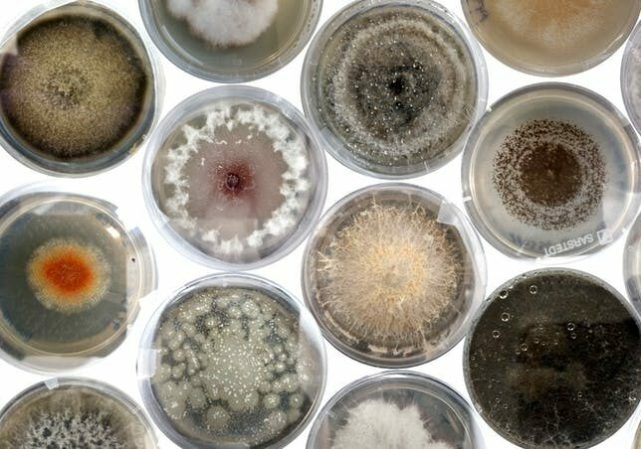

While refrigerators store food at safe temperatures and keep it fresh, they can also be a breeding ground for fuzzy gray mold that spoils fruit. Most molds thrive in warm temperatures, but many can grow in the refrigerator by producing spores. The spores can go airborne and accumulate inside the refrigerator and infect fruits and vegetables. However, plants may not be completely defenseless against this creeping fungus. According to a study published December 15 in the journal Cell Host & Microbe, plants use a stealth molecular weapon to attack the cells of gray mold.
[Related: A bit of care can keep your houseplants from sheltering harmful mold.]
To look closer, the team profiled the messenger RNA (mRNA) molecules present in a plant called Arabidopsis thaliana–or Thale cress–against gray mold (Botrytis cinerea). mRNA are small molecules within the cells that have a set of instructions like a blueprint. While all three types of RNA can build proteins, mRNA is the one that acts like a messenger, delivering the recipe for a protein.
In the lab, they observed how the plants send small lipid “bubbles” called extracellular vesicles that are filled with RNA and the mRNA molecules that can attack the cells of the aggressive mold. Once the bubbles are inside, the molecules can suppress the infectious mold cells.
“Plants are not just sitting there doing nothing. They are trying to protect themselves from the mold, and now we have a better idea how they’re doing that,” study co-author and University of California, Riverside microbiologist Hailing Jin said in a statement.
Jin’s team previously found that plants use these same bubbles to send small mRNA molecules that can silence the genes that make the mold more poisonous. This new study found that these bubbles have mRNA molecules that attack important cellular processes in the mold cells, including the functions of organelles.
“These mRNAs can encode some proteins that end up in the mitochondria of the mold cells. Those are the powerhouses of any cells because they generate energy,” said Jin. “Once inside, they mess up the structure and function of the fungal mitochondria, which inhibits the growth and virulence of the fungus.”
The team on this study is not entirely sure why the fungus accepts the lipid bubbles to begin with. They believe that the fungus may simply be hungry. Fungi may take in the bubbles for the nutrients, unaware that there is something dangerous inside. For the plants, this is an efficient strategy because one tiny mRNA molecule can have a large effect on the fungus. According to Jin, molecular weapons with mRNA can be translated into millions of copies or proteins and amplify their effect.
Interestingly, mold uses these same lipid bubbles to deliver small, damaging RNAs into the plants that they infect. They will suppress the plant’s immunity and provide good protection for the genetic information the fungi needs to take over the plant host.
[Related: Nightmare-fuel fungi exist in real life.]
“During infections, there are always a lot of communications and molecule exchanges where plants and fungi try to fight against each other,” Jin said. “Previously people looked at proteins being exchanged. Now, modern technology has enabled us to discover another important group of players in this battle.”
In future studies, the team hopes to use the discovery of this stealth RNA delivery system to create more eco-friendly fungicides. They believe that these potential RNA-based fungicides wouldn’t leave toxic residue in the environment or affect animals and humans.
“There is a never-ending battle to control pests and pathogens,” said Jin. “If we can deliver mRNA that interferes with mold cellular functions, we may be able to help plants more effectively fight in this battle.”















